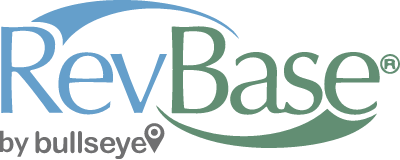
Marketers often kick off a search for a marketing asset management solution when they realize they want their digital and physical content in one unified system. So let’s clarify what we mean by digital and physical content.
Digital Assets
Today, marketing departments are very familiar with digital assets: PDFs, Excel documents, PowerPoint presentations, images, videos, etc. Marketers create digital content every day. This includes web pages with assets (e.g., images) and links to documents or tables of information.
Think of a marketing department as a digital content factory that keeps producing more and more content. Marketers typically have limited tools to help organize the content, keep track of it, and manage versions of it. Historically, of course, they had file systems. They’d throw everything in folders. A lot of digital marketing assets are still managed that way. And in this day and age, most marketing departments have a content management system for their website assets.
They might also have SharePoint or some tool which lets them organize digital artifacts that are made available to people through pages on their website. In a decent-sized marketing department, there’s usually a tremendous amount of digital content. A lot of that digital content is indeed on the website, but not all of it. And there’s generally a good amount of digital content that’s work-in-progress which may ultimately end up on the website but isn’t yet in the content management system.
Some digital content will never be placed in a content management system: price lists, competitive analyses, planning documents, style guides, templates, and other internal documents. These are digital assets marketers use to create other assets or for internal purposes.
So there you have it: a quick summary of the digital asset world. Its volume grows over time and people typically want to preserve the full history. It’s not uncommon for someone to need to look back at digital work they did a number of years ago. In many situations, they need to hold on to it for regulatory compliance for many years to come.
Physical Assets
Historically, physical marketing assets centered around literature on racks in dealerships or inside bank branches or material given to prospects by sales reps. Physical literature such as glossy brochures and cut sheets of collateral were in the trunks of sales reps’ cars, in lobbies of buildings, in display cases, and so on.
A good chunk of the marketing department’s time was spent planning, budgeting, creating, designing, checking, pre-flighting, and going over details with the printer to create a beautiful asset – a glossy brochure. It often carried a lot of cost, but it was an important, high-visibility deliverable for the department.
Even with all the attention on digital, the fact remains that marketers still create a huge amount of physical content, including data sheets, application notes, brochures, posters, manuals, point-of-purchase materials, and other items used throughout sales channels. They still have all of the workflow steps associated with creating and organizing it; keeping track of files and changing versions; getting it printed and shipped; making sure everyone knows how many they’re allowed to use; and giving people the ability to reorder when they need more.
Then there are physical materials the marketing department creates for use in trade shows, seminars, symposiums, conferences – and to support on-site customer visits. This includes posters, exhibit materials, examples of product concepts, or literally the product the marketing department uses and keeps track of at these events. At trade shows, it’s not uncommon for a manufacturer to have actual product displayed.
The trade show booth, giveaways, lead collection forms, and business cards are all physical content the marketing department needs to keep track of, manage, distribute, bring back to the office, and account for. If the business involves a lot of in-person selling via trade shows, the marketing department typically has a large investment in those physical assets.
Another category is a hybrid: Print-on-Demand. On the one hand, print-on-demand is digital, because files are print-ready and kept as digital artifacts. But they get printed when someone needs them and turned into physical items that then need to be distributed, shipped, delivered, etc.
Spectrum of Assets
The result of all this is a spectrum of assets from purely digital and always digital (such as images), all the way through to the other end of the spectrum, which is a physical product that came off the production line but the marketing department uses. And there are points in between, including print materials and so on.
In the early days of the digital marketing revolution, digital was added onto traditional marketing, which was very print-based, and the marketing department became organized in halves. The digital stuff was over here and the print/physical stuff was over there. The skill sets, at least a few years ago, were different. A print buyer was an expert in print buying for glossy brochures and other paper content, and a web designer or webmaster was good at HTML and other aspects of online marketing.
But today it’s a blur. Marketing communications professionals now live in a mixed digital/physical world. Increasingly, their skills are blended, and they need to augment their core knowledge with an appreciation of other skills.
In many cases, marketing content is also blended. The information could be in a PDF, so the digital file gets expressed as a PDF, and that PDF could be made available for download. It could also be part of an email campaign. And it might get printed.
Likewise, the images, text, and data in a glossy brochure are often published to the website. They’re not on the website as a brochure, but the content is the same. It just gets expressed as a web page.
When the marketing department accumulates a vast collection of assets in multiple systems, they struggle. One of the key advantages of marketing asset management is to bring all that content together into a unified environment.
Unification lets marketers leverage all that content. Unification makes it much easier to collaborate. Drawing it all together means marketers can make better trade-offs on what the ultimate expression of content should be. And it keeps an organization from creating the same asset twice.
When a colleague in France comes up with a design concept to explain a new product, if it’s available within the marketing asset repository, someone in California can take advantage of it. They might need to resize or translate it, but the creative artifact is repurposed more easily because it’s in a unified environment. A classic example is images. A lot of companies have digital repositories of their images. But unless they’re made available to everyone else with all other images, it’s very hard to keep from creating duplicates.
Here’s something that unfortunately happens often: Stock photography and illustration purchases that are unnecessary because similar images are already on hand, somewhere. Over the past 5-10 years, there’s been a big push toward getting that content together. But marketers have faced several challenges.
One challenge is the fact that data has historically been siloed. There’s often a tremendous volume of data, and the marketing department may not believe they can actually manage it all together. There may be different workflow styles in, say, European vs. North American vs. Asian operations. Harmonizing all that across time zones takes some effort to pull off.
But when it’s pulled off properly in a unified content repository of marketing assets, it becomes very powerful. This is one of the key benefits of a systematic approach for marketing asset management: making it all available in one comprehensive environment. That environment isn’t going to be just a bigger website or bigger series of shared folders. It actually has to have database technology underneath it, because it’s being unified within a repository. We’ll talk about that next.
To download our complimentary white paper, “10 Signs You Need Marketing Asset Management,” click here.
